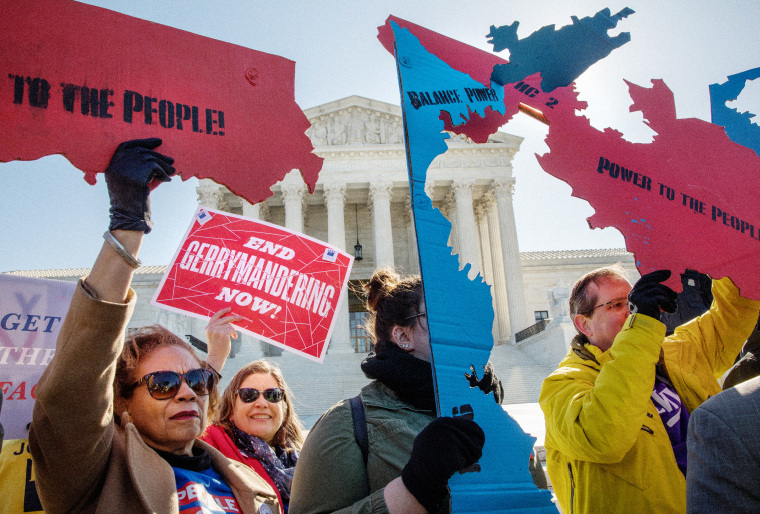The Supreme Court on Monday refused to strike down redistricting maps in Pennsylvania and North Carolina. The orders were a blow to Republicans who hoped the conservative-leaning court would reinstate their gerrymandered maps.
In the North Carolina case, the court’s three liberal justices were joined by Chief Justice John Roberts and Justice Brett Kavanaugh in their majority decision.
The ruling strengthens Democrats’ prospects heading into the midterms, and also shows the chaos and unending shifts of fortune that have occurred during this period of rampant gerrymandering and voter suppression leading up to November.

Last month, the North Carolina Supreme Court struck down Republican-drawn maps that would have given the GOP an unfair advantage. North Carolina Republicans have an 8-5 advantage over Democrats in favorable districts. The GOP-drawn maps would have given Republicans 10 of 14 of the state's U.S. House seats, according to voters and advocacy groups who sued over the matter. (The state gained a seat after the 2020 census was counted.)
But North Carolina isn’t a ruby red state when you look at how it votes. It’s a purple state that narrowly voted for then-President Donald Trump over Joe Biden in the 2020 presidential election by a 50-49 percent margin.
The North Carolina Supreme Court said the Republican plan violated residents’ right to free elections, freedom of speech and equal protections. It ordered a nonpartisan panel to redraw the maps, and that panel returned with a map that effectively gave Republicans a slight 7-6 advantage in favorable seats, with the other two seats being widely viewed as toss-up races.
In Pennsylvania’s case, the U.S. Supreme Court declined to grant an injunction to block state court-ordered maps that will create nine Republican-friendly districts and eight Democrat-friendly districts. That’s virtually an even split in a state with 17 congressional seats. The Pennsylvania Supreme Court approved the maps after Democratic Gov. Tom Wolf vetoed a proposal from the state’s GOP-led Legislature.
Republican lawmakers had proposed maps that would have created seven safely Republican seats, five safely Democratic seats, and made the rest toss-ups, with at least one likely to vote Republican.
Lately, supporters of voting rights have suffered significant losses in the Supreme Court. Monday’s decisions were surprisingly positive developments, yet also a reminder that in a country teeming with election-related legal fights, the court holds outsize power to uphold or undermine our democracy.
